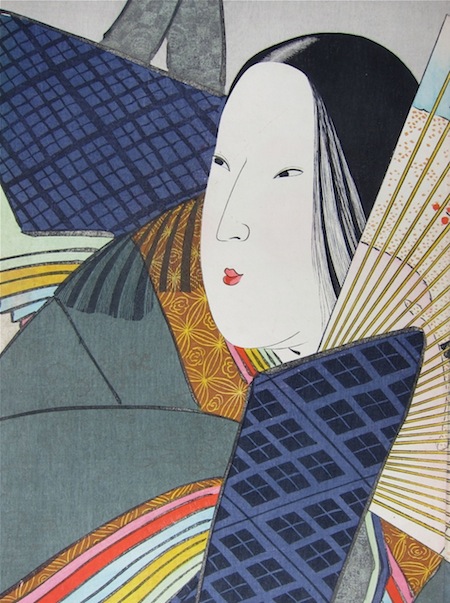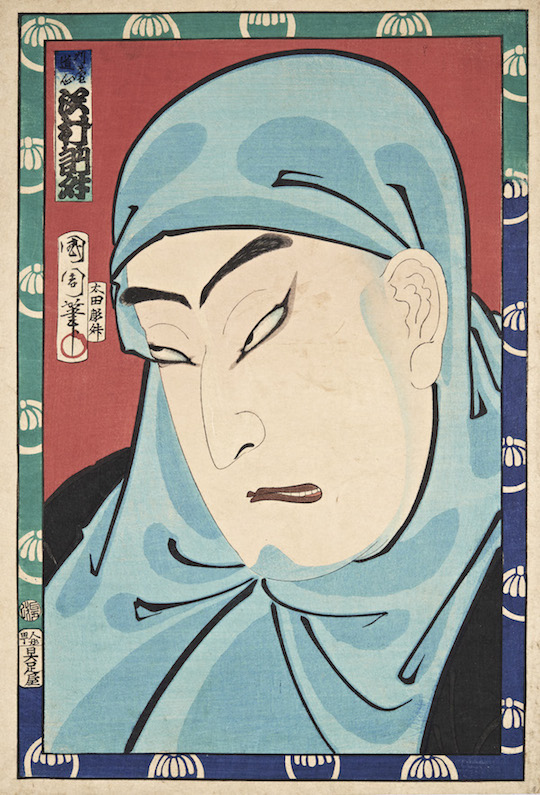May the 20th sees the launch of a new show at the Toshidama Gallery. The exhibition looks at the work of Toyohara Kunichika, (1835-1900), and his fellow artists. There are some very fine prints indeed on show and for sale, not least a simply phenomenal print by the artist Kobayashi Kiyochika (1847 – 1915) from his finest series, Patterns of Flowers (Hana Moyo) of 1897.
The print appears to be more or less unknown (completely so in fact) in the literature. The leading Kiyochika scholar Henry D Smith II has this to say on the series:
All of the triptychs in this series (ten are known) feature the unusual composition of enlarged figures or busts of women against a distant background depicting customs of a particular historical era. The term ‘patterns’ (moyo) would seem to refer both to the elegant designs of the costumes on the foreground figures and to the background tableaux. The ‘flowers’ of the series “Flower Patterns” are the beautiful women themselves… The titles of the ten prints refer to specific eras of the Tokugawa period…
KIYOCHIKA – Artist of Meiji Japan, Santa Barbara Museum of Art, 1988 pp. 98-99.

There are the ten known prints, and this exquisite print makes an eleventh.
For the print itself, a riotous array of panels of colour and pattern collide across the surface. In true ukiyo-e tradition (and there’s lots here), the face, exquisitely drawn like a noh mask, emerges from the geometrics of the fan and the panels of fabric. Part portrait, part still life of a Zouonna mask lying on a pile of kimono, this extraordinary image partly defies description. The inset panel, in complete distinction to the main piece shows a group of Edo towns people. The subject matter of the print is unknown. This is a terrific series, the prints in it are simply stunning pieces of work in their outrageous, cinematic scope and design and in the near miraculous way that Kiyochika weaves a reverence for the great history and traditions of Japan and the challenges of the new, modern state. Not only that, when looking at design and composition in the west, one has to wait decades before anything as bold as these designs becomes visible.

Les Demoiselles d’Avignon 1907
It seems also to predict the experiments in synthetic cubism made by Picasso and Modigliani in pictures such as Les Demoiselles d’Avignon from 1907. These superb prints not only look back to the glories of Edo and Tokugawa art, but anticipate the revolutionary designs of western applied arts in the 1920’s and 1930’s.
Kunichika and the Meiji is at Toshidama Japanese Prints from 20th May – 23rd June 2016.


